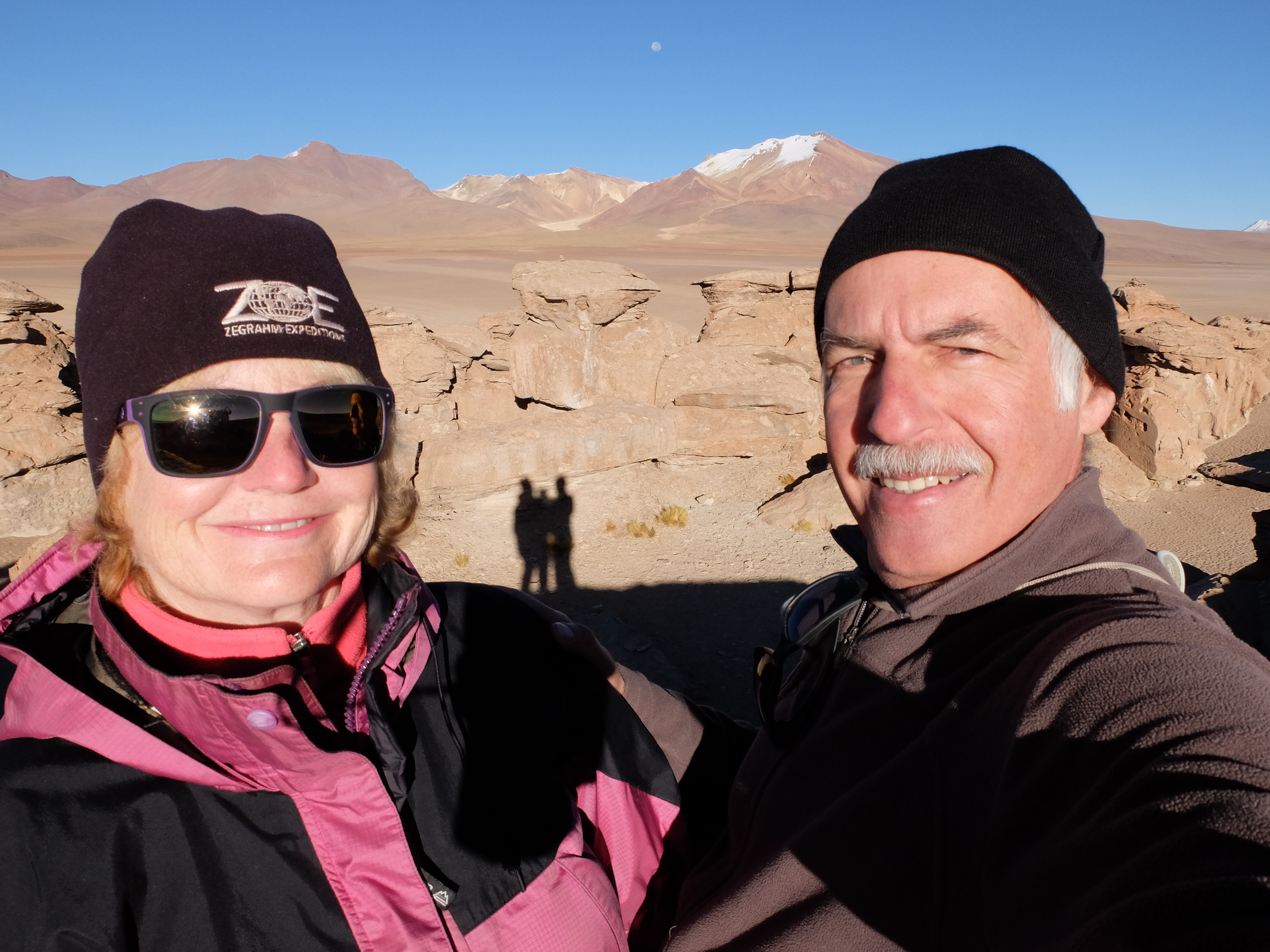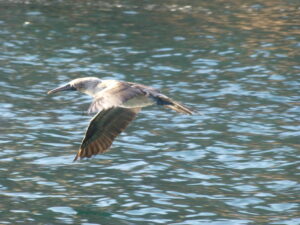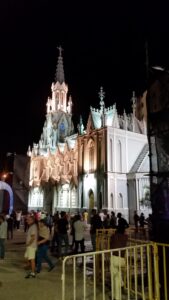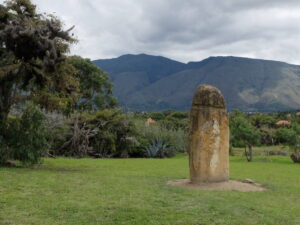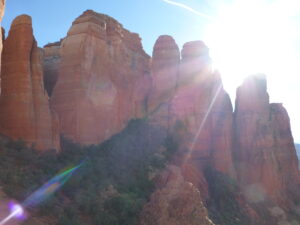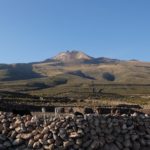
To begin with the dead, the mummies and the mound-covered burial chambers we visited along the edge of the salt flats attest to residents from thousands of years ago.
It is likely that then, as now, they harvested salt to trade with others, grew what they could to eat despite the saline soil (quinoa and potatoes grow well at altitude), and bred llamas for food and wool. Climbing up the slopes of a volcano, we saw llamas still grazing over the rocky terrain.
We knew about this, but it was a bit eerie to enter a darkened cave called El cementerio de los chullpas and find dozens of tumuli, mounds constructed over burial chambers chiseled out of the limestone.
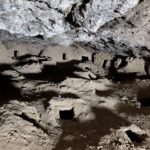
Emptied long ago by pillagers and archeologists, the many empty chambers, each of which accommodated a number of the dead, suggest a sizable population here five hundred or more years ago.
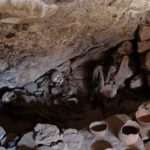
And it was even eerier to see the naturally mummified bodies of villagers from around 1000 years ago in the caves at Coqueza, another small village. Some of these bodies were clearly buried in fetal position after death, the traditional tribal way. But, in one cave visited by tourists, a skeletal family seems frozen somehow, with the implements of their daily lives around them, trapped by mysterious circumstances as they rested, then petrified.

The current residents around here, though, cater more and more to the tourists who are attracted to the amazing sight of the white salt plains we posted about. Colchani on the very edge of the flats past Uyuni still harvests some salt in backyards and side rooms, showing off small-scale production methods to visitors and selling salty souvenirs.
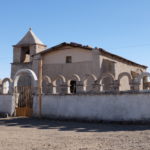
Inns and a museum have come to Coqueza to engage the mummy visitors, along with a fanciful display of figures constructed from the fossilized coral deposited by the salt seas that created the flats long ago.
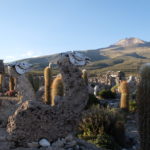
The largest town here, Uyuni, still handles the flow of unsalty goods between Bolivia and nearby peoples. That’s why some of the best roads in the country are here, as well as several train lines. Those lines appeared early in Uyuni because of silver mining nearby, as well as the proximity of Chile and Argentina.

Though you can’t find any mummies or ancient burial sites in Uyuni, you can visit two very different graveyards: the resting places for old trains and rusting train equipment.
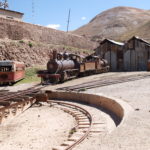
After the deathly pallor of the icy white salt flats and the ancient graveyards and mummies along the shore, we were surprised to find the red desert of Avaroa National Reserve teeming with life.
This is a high altitude desert with its own stark quality. There are few signs on the roughly marked trails that cross these red sand valleys amid the volcanic mountains of Bolivia and Chile.
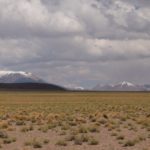
Only the experienced driver knows which direction to go. It’s often not easy for the passengers either. When these roads wind up and down the rugged hills, it’s a very rough stone-strewn ride. Fortunately, local villagers keep them somewhat passable, and charge modest tolls for the service.

On first coming to the desert from the salt plains, you head across the sands through clumps of grass and other desert plants, home for the tiny wildlife dependent on them. Vicunas, nationally protected deer-like animals with highly-prized pelts, also frequent this area for the good food, as do a few dozen other mammals, from the puma to the armadillo.
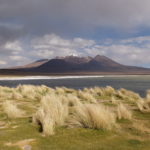
The big surprise are the numerous and enormous lagoons, which mirror the snow-topped and red clay mountains, or shine with eye-popping blue or glistening sunlight. You don’t even know they’re coming. The four-wheel drive van tops a rise and the waterways seem to leap into view.
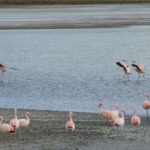
These grass-fringed and reedy lagoons of fresh water are alive with huge flocks of flamingos and shore birds, all feeding on the plants and tiny creatures living within the waters. Some 80 other bird species flock to the desert and numerous reptiles. We couldn’t help but notice a rhea, a kind of ostrich, loping along the plains at one point.


But the only sign of the famous “flagellated algae” in the Laguna Colorada is how it tints the water – and all things reflected in it – red.
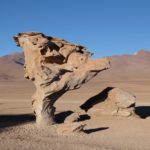
Even the lifeless things here seem animate. In one part of the Reserve, a huge area of thermal pools and holes variously steams, bubbles, pops and spurts in endlessly entertaining motion.
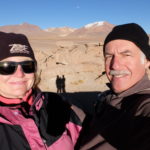
Elsewhere, incongruous rock formations seem to have sprouted out of the sand and gathered to confer. One emulates a stunted tree swept by easterly winds, frozen in time.
The dazzling salt flats gave us a thrill. But, in the lively desert of the Avaroa Reserve, our excitement was never reserved.
To read part 1, about the salt flats of Uyuni, click here.
(Also, for more pictures from Bolivia, CLICK HERE to view the slideshow at the end of the itinerary page.)


